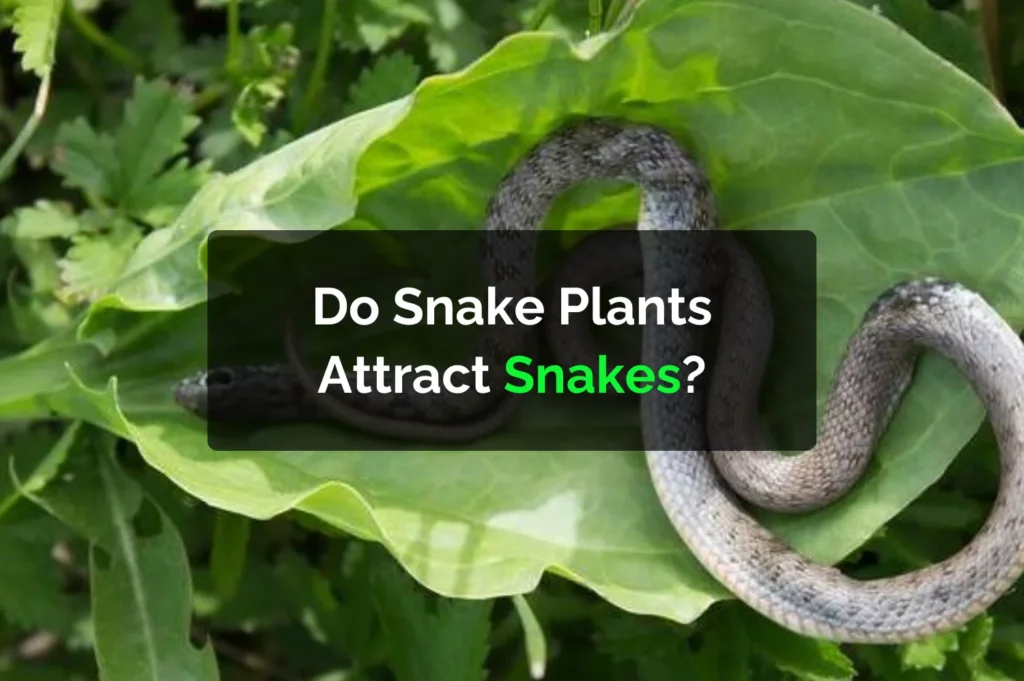Snake plants, also known as Sansevieria or Mother-in-law’s Tongue, are popular houseplants loved for their low maintenance and air-purifying qualities. But their name often raises a curious question: Do snake plants attract snakes? Let’s explore the truth behind this idea and understand what really attracts snakes to our surroundings.
Understanding Snake Plants
Before jumping to conclusions, let’s understand what a snake plant really is.
- Appearance: Snake plants have long, upright leaves with green and yellow stripes. Their sharp and pointed leaves may resemble a snake’s movement, which is likely why they’re named this way.
- Indoor Benefits: They clean the air by removing toxins like formaldehyde and benzene. They’re also drought-tolerant and ideal for beginners.
- No Aroma: Snake plants do not produce strong scents or sweet nectar that could attract wildlife.
Do Snakes Like Snake Plants?
The simple answer is no, snake plants do not attract snakes. There is no scientific evidence proving that snakes are drawn to this plant in particular. However, let’s look at some factors that might confuse people.
Why the Confusion Happens
People might believe snake plants attract snakes for a few reasons:
- The Name: The term “snake plant” makes it sound like the plant has something to do with real snakes.
- The Shape: The leaves can look like snakes, especially from a distance.
- Outdoor Settings: If snake plants are placed in gardens with dense shrubs, snakes may already be present and seen nearby.
So, while snake plants themselves don’t attract snakes, the environment around them can make a difference.
What Actually Attracts Snakes?
Snakes are drawn to specific things, including:
- Moisture: Water sources such as ponds or leaking pipes can attract snakes.
- Hiding Places: Snakes love dark, cool places like piles of rocks, firewood, or thick bushes.
- Food Sources: Areas with a lot of rodents, frogs, or insects can attract snakes.
- Long Grass or Weeds: Unmaintained lawns can become an inviting hiding spot for snakes.
If these conditions exist near your snake plant, the snake is there because of the surroundings, not the plant itself.
Is It Safe to Keep Snake Plants Indoors?
Absolutely! Snake plants are one of the safest indoor plants when it comes to wildlife.
- No Insects or Rodents: Snake plants do not attract insects, which means there’s nothing to lure a snake.
- No Scent: They don’t emit any strong smells or secretions.
- Low Maintenance: Since you don’t need to water them often, you’re not creating a moist area that might attract snakes.
For indoor environments, snake plants are completely safe.
How to Keep Snakes Away from Your Garden
If you’re still worried, here are some tips to prevent snakes from entering your garden:
- Trim the Grass Regularly: Keep your lawn short and neat.
- Remove Hiding Spots: Don’t leave piles of wood, stones, or old pots lying around.
- Seal Holes: Close off any small holes or cracks in your garden walls or foundation.
- Use Natural Repellents: Scents like garlic, clove oil, or cinnamon may keep snakes away.
- Keep It Dry: Fix leaking taps or water sources in your garden.
Frequently Asked Questions (FAQs):
Why are they called snake plants?
The name comes from the plant’s long, pointed leaves that resemble a snake’s shape.
Are there any plants that attract snakes?
Not really. Snakes are not attracted to plants, but to environments that provide food and shelter.
Should I avoid planting snake plants in my garden?
Not at all. Snake plants are safe and decorative. Just make sure your garden is clean and dry.
Do snake plants attract bugs?
No. Snake plants are pest-resistant and don’t usually attract bugs or insects.
Conclusion
Snake plants do not attract snakes. The idea is mostly based on their name and appearance, not scientific facts. These plants are safe, beautiful, and perfect for both indoor and outdoor decoration. If you keep your surroundings clean and dry, there’s no reason to worry about snakes. So go ahead—decorate your space with confidence using the elegant snake plant!






